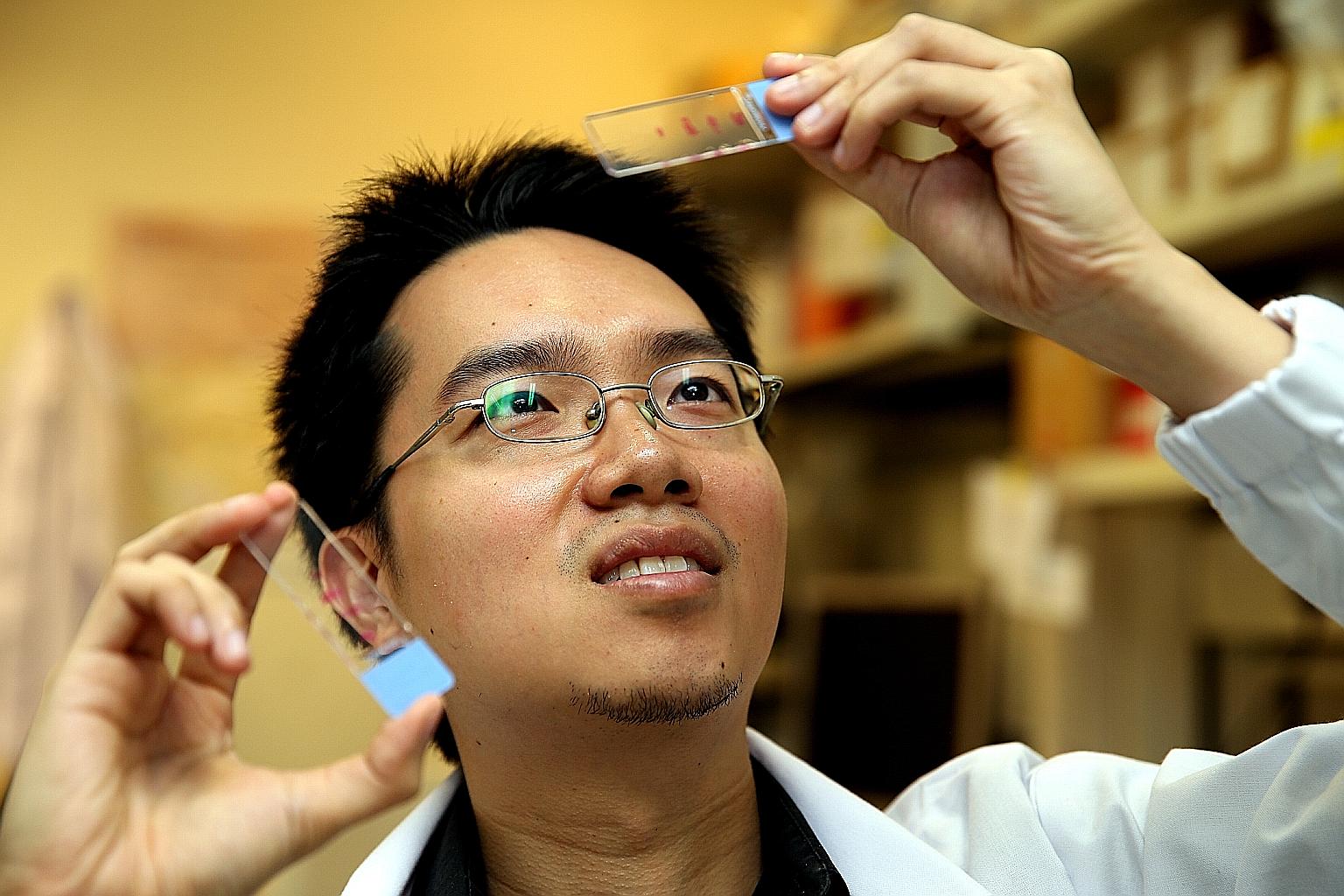Uncovering the secret of turning back time
Scientists at A*Star have found gene in human egg cells that can reverse ageing of adult cells
Sign up now: Get ST's newsletters delivered to your inbox

Dr Ng Shyh Chang and his team at the Genome Institute of Singapore at A*Star hope to achieve the "holy grail" for ageing research - to reset adult cells partially to young adult cells instead of embryonic-like stem cells.
ST PHOTO: WONG KWAI CHOW
Carolyn Khew
Follow topic:
Singapore scientists have unravelled a mystery that could pave the way for turning back the clock on ageing.
A recent study led by Dr Ng Shyh Chang of the Genome Institute of Singapore at the Agency for Science, Technology and Research (A*Star) has found a gene in human egg cells that suppresses an enzyme causing cells to age.
This is the Tcl1 gene, and by increasing the protein it produces, the researchers found they could suppress the enzyme that causes mitochondria - the cells' batteries - to age over time.
Mitochondria are structures in cells which help to produce energy needed for their functions.
The discovery was made while the team was trying to understand how exactly Dolly the sheep was cloned in 1996. The celebrity sheep was the first animal to be cloned from the cell of an adult sheep by British scientists.
It was done by taking the nucleus - which contains DNA - from a mammary gland cell in an adult sheep, and fusing it with an egg cell or an oocyte.
But no one really understood what had caused the cells taken from the adult sheep to "reset" such that they could become like embryonic stem cells, said Dr Ng, who received his PhD from Harvard Medical School.
"It wasn't clear what those mysterious factors were. We found that part of the reason the cloning process worked was because the mitochondria had been reset, so that the old adult cells could become embryonic-like stem cells," he added.
The discovery that these mature cells can be reprogrammed to become embryonic-like stem cells that can grow into any type of cell was made by Dr Shinya Yamanaka, and it won him the Nobel Prize for Physiology or Medicine in 2012 .
This reprogramming, known as induced pluripotent stem cell (iPSC), circumvents the ethical issues of using stem cells from days-old embryos.
But an obstacle prevented the process of reprogramming of the mature cells back into embryonic-like stem cells from completing, Dr Ng said .
This is the "old memory" they often retain of their original identity, or the epigenetic marks of the cells they were taken from.
"When the reprogramming is incomplete, it's very hard to convert the embryonic-like stem cells into different kinds of tissues.
"For example, when you're trying to turn adult cells into blood, if your iPSC programming is not good, it doesn't even get you into the intermediate stages," said Dr Ng.
"It just stops and that's because it's not exactly like an embryo."
But the finding of the study by Dr Ng and his research team will help to completely reset the "old memory" of adult cells.
The study is still in its infancy, but Dr Ng is hopeful his team would achieve the "holy grail" for ageing research, which is to find out how to reset it partially to young adult cells instead of all the way back to embryonic-like stem cells.
The achievement could, for instance, lead doctors one day to reprogramme the heart muscle tissues of an 80-year-old to that of a 30-year-old's, so that the heart can function more effectively.
Said Dr Ng: "For almost every disease, ageing is the single biggest risk factor, independent of all other factors. The research we are doing in ageing and regenerative medicine has the potential to eradicate ageing as a risk factor.
"There may be other risk factors, but you won't be consigned to the fate of growing ill with diseases like cancer or cardiovascular disease just because you are old."

